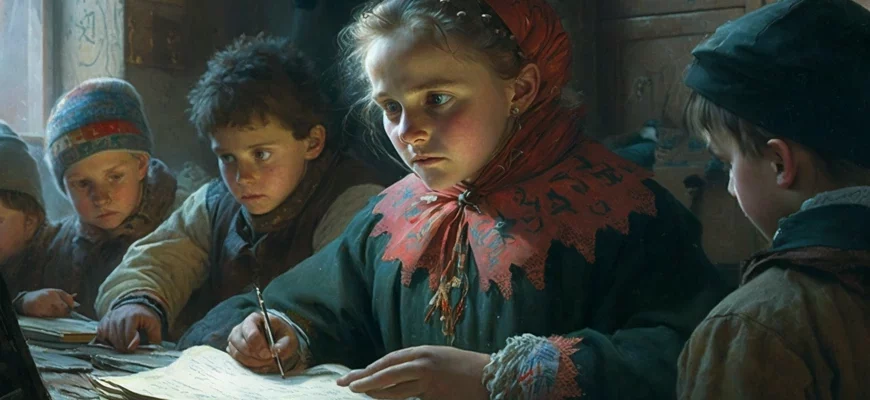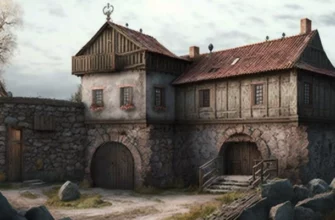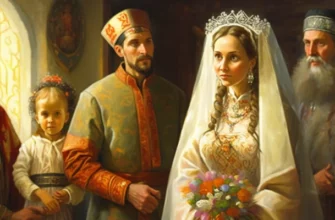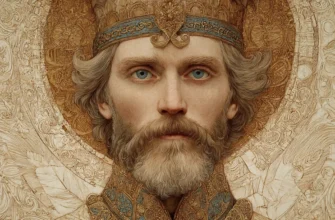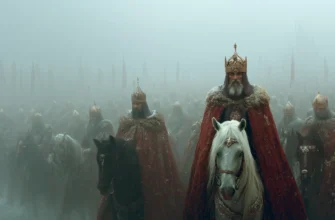The first schools appeared in Kievan Rus in the 10th-11th centuries, when the development of culture and education was an important part of people’s lives. The most famous schools of that time were Kyiv-Pechersk and Novgorod, which taught religious and secular sciences. Education was mainly available to the sons of the nobility and the urban elite. The development of education in Kievan Rus was accompanied by the establishment of book collections and libraries, which allowed knowledge to be preserved and disseminated. The legacy of Kievan Rus has been preserved in modern Ukrainian education and culture, influencing the formation of national consciousness and citizenship.
- The founding of Kievan Rus and the first mentions of education
- The first schools in Kievan Rus
- The beginning of the development of writing in Kievan Rus
- The role of the Kyiv-Pechersk Lavra and other monasteries in the development of education
- The development of education in Kievan Rus: religious and secular aspects
- Religious education: the place of canon law and theology in education
- Secular education: schools for the children of the nobility and urban elite, development of knowledge in the fields of medicine and astronomy
- The legacy of Kievan Rus in modern education
The founding of Kievan Rus and the first mentions of education
Kievan Rus was founded in the middle of the 9th century on the territory of modern Ukraine, Belarus, and Russia. The earliest mentions of education in Kievan Rus date back to the 11th century, when the first school teaching reading and writing was founded in Kiev. However, the first publicly accessible school is considered to be the Kyiv-Pechersk School, founded in the 11th century by monks who had migrated from Byzantium. It was engaged in teaching religious sciences and theology, as well as storing books and manuscripts. Over time, other schools appeared in Kievan Rus, such as the Novgorod School, which taught secular sciences. However, education at that time was mainly available to the sons of the nobility and the urban elite.
The first schools in Kievan Rus
The first schools in Kievan Rus appeared in the 10th-11th centuries and were associated with the development of culture and education. The most famous of these were the Kyiv-Pechersk and Novgorod schools. The Kyiv-Pechersk school was founded by monks who had migrated from Byzantium in the 11th century and was engaged in teaching religious sciences and theology, as well as preserving books and manuscripts. The Novgorod School focused on teaching secular sciences such as mathematics and astronomy. However, education at that time was mainly available to the sons of the nobility and the urban elite. With the development of education in Kievan Rus, other schools, as well as book collections and libraries, appeared, which allowed for the preservation and dissemination of knowledge.
The beginning of the development of writing in Kievan Rus
The beginning of the development of writing in Kievan Rus is associated with the introduction of Christianity to the princes of Kiev. In the 9th century, the Glagolitic alphabet was created, which was used to translate religious texts. In the following centuries, Glagolitic was replaced by Cyrillic, created by Cyril and Methodius. The first books in Cyrillic appeared in the 11th century. With the help of this alphabet, knowledge and information were preserved and transmitted, and literary works were created. With the development of writing in the territory of Kievan Rus, book collections and libraries appeared, which allowed knowledge to be stored and disseminated. Most of the works of literature of that time were related to religious motifs, but over time, secular works also appeared, which contributed to the development of the literary and cultural heritage of Kievan Rus.
The role of the Kyiv-Pechersk Lavra and other monasteries in the development of education
The Kyiv-Pechersk Lavra and other monasteries played an important role in the development of education in Kievan Rus. Monks were engaged in copying books, creating new works, and disseminating knowledge. Schools were established in monasteries, where reading, writing, and religious sciences were taught. The Kyiv-Pechersk Lavra had a publishing office where books on various topics, including educational ones, were printed.
In addition to the Kyiv-Pechersk Lavra, there were many other monasteries in Kievan Rus that were involved in the development of education. For example, a school was established at the St. Michael’s Monastery in Kyiv, where literacy and religious sciences were taught. Monasteries also provided free accommodation and meals for student monks, which helped to ensure access to education for people from different walks of life. Thanks to the role of monasteries in the development of education in Kievan Rus, many outstanding spiritual and cultural works were created, which became part of the world’s cultural heritage.
The development of education in Kievan Rus: religious and secular aspects
The development of education in Kievan Rus had both religious and secular aspects. Religious education was extremely important in the early period of the state’s formation, as it provided the foundations of morality and culture for the Ukrainian people. Monasteries played a key role in preserving and disseminating religious knowledge, as well as in educating new generations of monks and priests.
At the same time, secular education also developed in Kievan Rus. In noble families, children were educated by private tutors who taught them reading, writing, mathematics, and history. In some cities, municipal schools were established to educate the children of local residents and those from noble families.
However, secular education did not develop as quickly in Kievan Rus as it did in the religious sphere. The knowledge passed down from parents to children was basic and focused on practical application rather than the development of science and culture. However, over time, secular education became increasingly popular, which contributed to the development of science and technology in the country.
Religious education: the place of canon law and theology in education
Religious education in Kievan Rus was based on canon law and theology. Canon law provided rules of conduct and spiritual norms, which were set out in special books. These norms formed the basis for ideas about the world and man’s place in it. Theology studied religious dogmas and beliefs, reflecting philosophical views on God and man.
Monasteries played a key role in the development of religious education. They had their own libraries, which stored valuable manuscripts and books that allowed monks to study and develop. They also held lectures, debates, and discussions on religious topics, which contributed to the development of the monks’ intellectual activity.
Canon law and theology were the basis for the formation of university education in the future. In 1632, the first university in Ukraine was established on the basis of the Kyiv-Mohyla Academy, which became the center of scientific and cultural development in the country. Thus, religious education in Kievan Rus was an important component of the intellectual and cultural development of the Ukrainian people.
Secular education: schools for the children of the nobility and urban elite, development of knowledge in the fields of medicine and astronomy
Secular education in Kievan Rus’ was geared towards the needs of the nobility and urban elite. In 1070, the first school for the children of the nobility was founded in Kyiv, which provided the basics of literacy and knowledge of religion and morality. Later, in the 12th-13th centuries, schools appeared that provided a broader range of knowledge, such as logic, rhetoric, and geometry.
Knowledge in the fields of medicine and astronomy also developed in Kievan Rus. The famous Prince Yaroslav the Wise, in particular, was interested in medicine and natural sciences and supported the development of these fields. In 1036, the world’s first known astronomical calendar, the “Kyiv Chronicle,” was created, which reflected the movements of the planets and the moon in the celestial sphere.
Thus, secular education in Kievan Rus was aimed at developing the intellectual activity of the nobility and urban elite, as well as supporting the development of science and culture of the Ukrainian people.
The legacy of Kievan Rus in modern education
Beginning of education in Kievan Rus has a significant impact on modern Ukrainian education and culture. For example, many of the traditions and customs that we observe in Ukraine have their roots in the ancient times of Kievan Rus. Also, knowledge of the history and culture of Kievan Rus, which occupies an important place in modern Ukrainian education, plays a significant role in the formation of national identity.
In addition, the cultural heritage of Kievan Rus is reflected in a large number of architectural monuments, which testify to the importance of art and architecture for this era. Many of these monuments are national treasures and are excellent examples for research and study in modern Ukrainian culture.
The cultural heritage of Kievan Rus’ is also important for the study of the Ukrainian language and literature. Many of the most famous works of Ukrainian literature have their roots in ancient Kievan Rus’, such as “The Tale of Igor’s Campaign” and others.
Therefore, the cultural heritage of Kievan Rus is an important component of modern Ukrainian education and culture, so studying the history and culture of this period is of great importance for the preservation and development of national identity.
